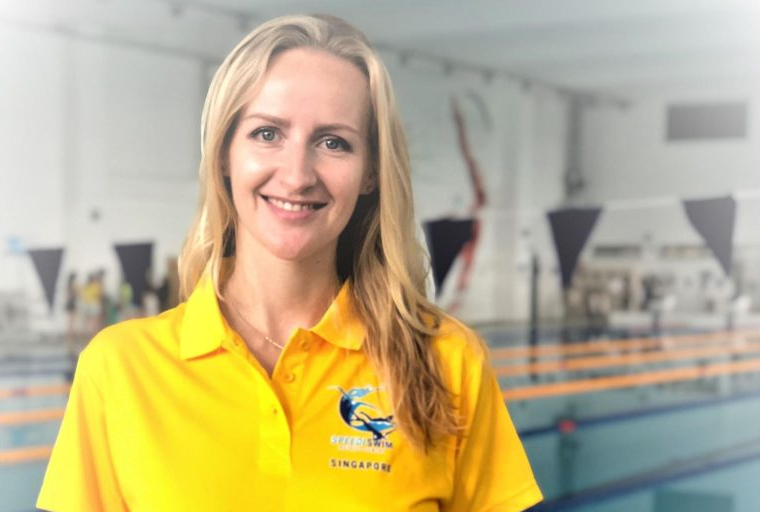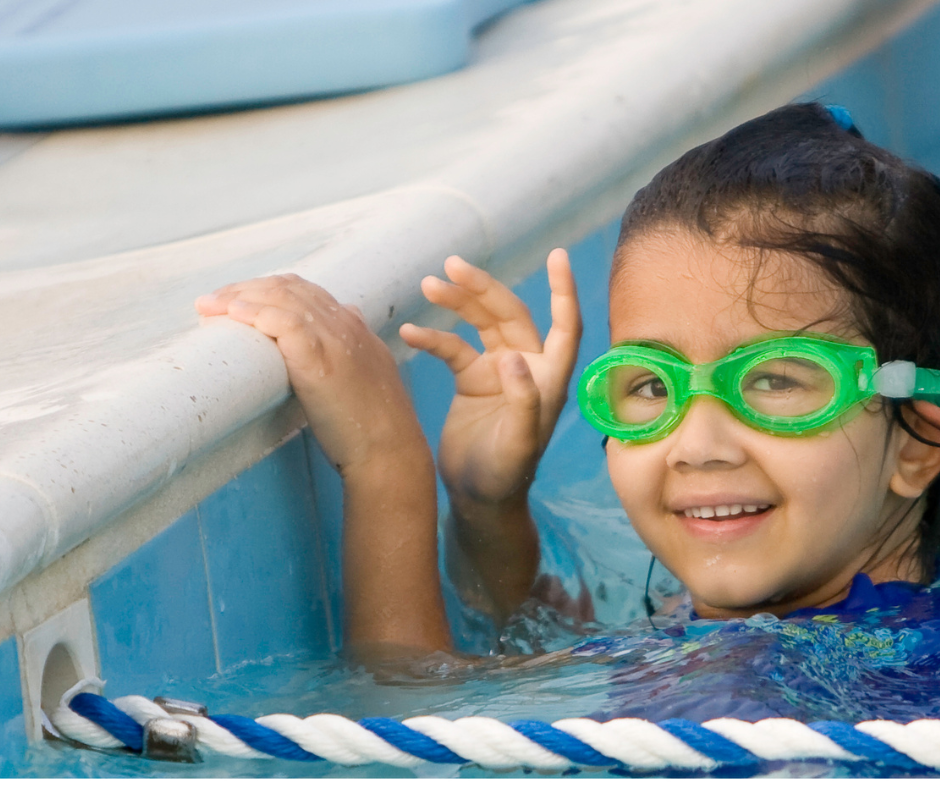
Swimming is a popular recreational activity that involves propelling oneself in water using the arms and legs. It is also a competitive sport, in which athletes compete to achieve the fastest times in various swimming events. Swimming can be done in open water (such as oceans, lakes, or rivers) or in pools.
It is a great way to get cardiovascular exercise, build strength, and improve coordination. It is also a great way to relax and have fun.
The six strokes of swimming are the Freestyle, Breaststroke, Backstroke, Butterfly, Sidestroke, and Survival Backstroke. It is a great way for any swimmer to increase their power and agility.
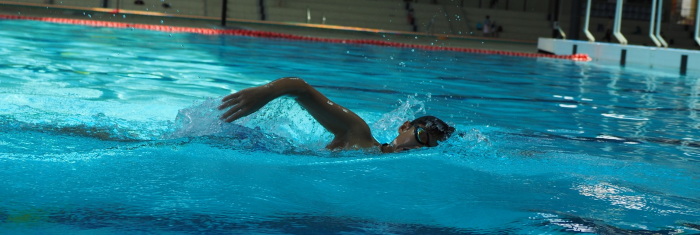
The freestyle stroke is also known as front crawl. Freestyle is the fastest stroke used in competitive swimming and is also widely used for recreational swimming. It is characterized by alternating arm movements accompanied by a flutter kick.
The freestyle stroke is a versatile stroke that allows swimmers to swim with great speed and efficiency. It emphasizes proper body positioning, from keeping the hips high to focusing on an even, long stroke. Freestyle swimming can be used for lakes, rivers, and pools, providing swimmers with a diverse way to get in a great workout. To develop freestyle skills even further, swimmers can practice drills to increase their power, speed, and technique. Drills commonly used for freestyle are catch-up drills, single arm drills, kick drills, and sprint work. Through practice and dedication, swimmers can develop their freestyle stroke to help them swim faster and more confidently in their next swimming adventure.
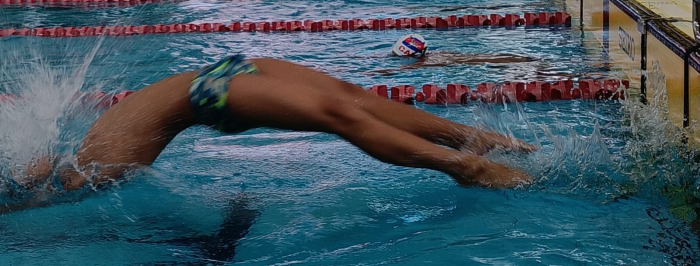 Backstroke is a relatively fast swimming stroke used for both competitive and recreational swimming. It is characterized by a strong reverse flutter kick and arms that move in a continuous circular pattern, alternating from side to side.
Backstroke is a relatively fast swimming stroke used for both competitive and recreational swimming. It is characterized by a strong reverse flutter kick and arms that move in a continuous circular pattern, alternating from side to side.
Backstroke is an easy and relaxing swimming stroke that can help swimmers stay afloat with minimal effort. It is often used in tandem with other swimming strokes to help conserve energy for a longer swim. Unlike freestyle, which requires swimmers to turn their heads to breathe, backstroke allows swimmers to breathe easily throughout the stroke.
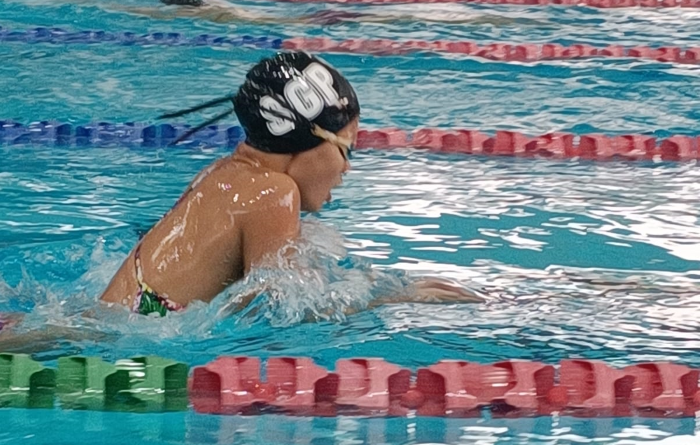
Breaststroke is the slowest of the competitive swimming strokes and is considered to be the most difficult to master. It is characterized by breaststroke kick and arms that move in a circular pattern. It is popular with people who like to swim for fitness as the breathing is much easier than with the front crawl.
Breaststroke requires a lot of coordination between the arms and legs to be executed correctly. The arms sweep outward from the center of the body and then pull back in with the palms facing inwards and the hands passing below and alongside the waist. The legs move in a simultaneous dorsiflexion and flexion pattern. To generate propulsion, the legs and arms should move in a circular pattern, with the arms pushing forward during the up-kick and the legs during the down-kick. The kick should be done underwater with the knees bent and heels drawn up towards the buttocks. For an efficient breaststroke swimmer, the body needs to stay in a horizontal position, with the head and chin in the water, the body undulating like a wave and the toes pointed throughout the stroke.
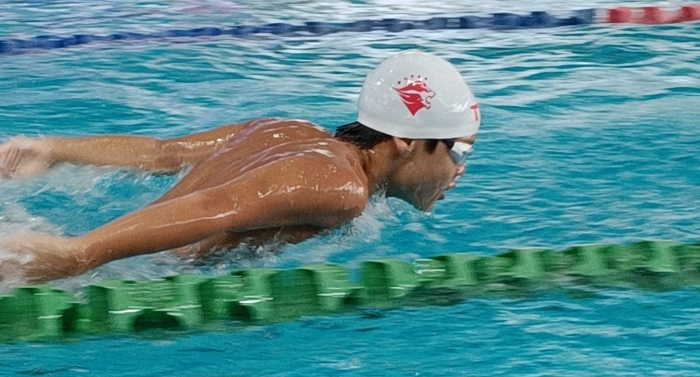
Butterfly is an advanced form of the freestyle stroke that is characterized by an undulating dolphin kick and simultaneous pulling and pushing with both arms.
The wave-like movement of the body serves as the foundation for a good butterfly style. It begins in the trunk and continues through the hips and legs. There are four phases in the butterfly arms pull.
Introductory phase: Utilizing the extended arms at shoulder width, the pulling phase is initiated close to the water surface. The first leg kick begins, and hands then pull outward in a V-like motion to initiate the "high elbow" position. Hands are then moved up to shoulder level, maintaining the "high elbow" position.
Main phase: Propulsive phase
Pushing phase- “keyhole”
Power-“final push-off”
Transition phase: Arms move above water surface.
During this phase, both arms simultaneously breach the water surface, accompanied by a second leg kick. The hands and forearms exit the water first, and the hands maintain their position without any rotation.
Preparatory phase: Arms swing forward (relaxation of the muscles)
In the preparatory phase, the arms should be swung forward in a relaxed manner. The arms should be swung outward with the elbows slightly bent and the shoulders should be slightly raised.
The butterfly stroke is challenging to master as it requires strong core and upper body strength as well as considerable coordination and balance.
When executed properly, the butterfly can be one of the fastest swimming strokes and a great way to work the entire body.
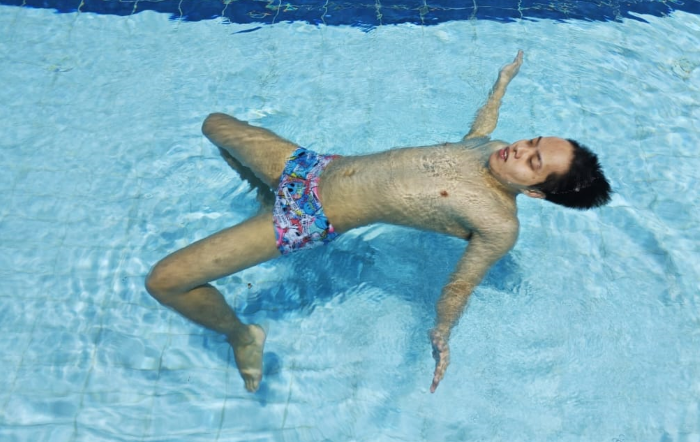 The survival backstroke is a great stroke for beginners to learn. It is a slow, relaxed stroke. The swimmer begins by lying face up in the water with their arms extended in front of the body. The arms should be slightly bent at the elbows and the hands should be cupped, with thumbs pointing outwards. The leg action is a reverse breaststroke kick. As the legs move, the arms should sweep back and forth.
The survival backstroke is a great stroke for beginners to learn. It is a slow, relaxed stroke. The swimmer begins by lying face up in the water with their arms extended in front of the body. The arms should be slightly bent at the elbows and the hands should be cupped, with thumbs pointing outwards. The leg action is a reverse breaststroke kick. As the legs move, the arms should sweep back and forth.
The key difference between backstroke and survival backstroke is the arm action. In backstroke, the arms alternate pulling and pushing the water, whereas in survival backstroke both arms move together in a circular motion.
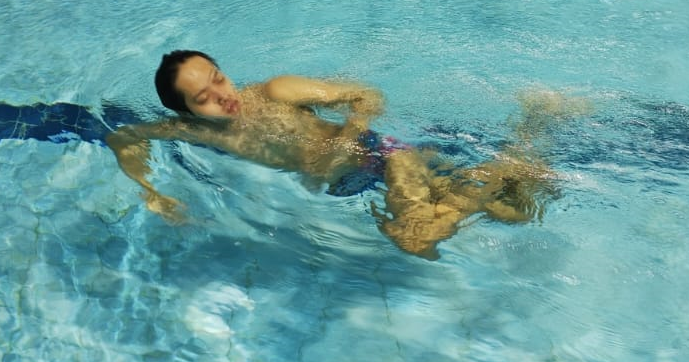
Sidestroke is a swimming stroke that is mainly used for personal survival and lifesaving tow. It is characterized by a scissor kick and double arm movements.
Sidestroke is a relaxed stroke, and is considered a good form of exercise for swimmers looking for low-impact exercise. It also provides a great way for all swimmers to strengthen their core muscles, improve their balance and increase their overall flexibility. It can help to strengthen the back, shoulders, and arms, as well as build endurance.
By practicing all six swimming strokes, swimmers can develop a well-rounded set of skills, increase their endurance and agility, and have fun in the process. Swimming is a great way to get a full-body workout, as it uses all four limbs as well as the core muscles. Swimming can be used as a form of relaxation and stress relief, and is a great way to be social and meet new people.
